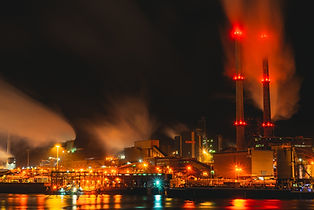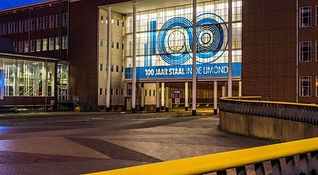
PROJECTS


Tata Steel | Sustainable in every sense
An innovative, flexible working environment for Corporate Communications & Public Affairs
According to Site Facilities (SF) the existing 'cellular office' concept at Tata Steel was up for revision. Serious doubts were raised regarding the future-proofing of the office concept. The immediate cause for this was the relocation of a number of departments located in buildings elsewhere on the site to the main office (the 'Dudok huis' - named after the famous Dutch architect Dudok) which would lead to serious capacity problems.
Furthermore Site Facilities wondered whether the existing layout of the work floors was fit for purpose and whether the current way of working was adequately supported. In addition, Site Facilities indicated that it had its doubts about the appeal of the existing work environment with regard to finding and retaining employees.
Tata Steel
With offices in 26 countries and commercial offices in more than 35 countries, Tata Steel is one of the most international steel producers in the world and one of the largest steel producers in Europe.
Dudokhuis
The Dudokhuis (1951), the main building on the Tata Steel site 1951, was designed by the Dutch architect Willem Dudok and his partner Robert Magnée. The main building consists of an elongated three-storey office building interrupted by an almost equally high glass gate giving access to the production site. Over the years, three more wings have been added to the back of the building, on the production side.


Integral design approach
Tata Steel's Corporate Communications & Public Affairs (CCPA) department acted as the pilot department for the development and realization of an innovative work environment concept using the activity-based design approach.
Nassau, in collaboration with management and employees of CCPA, mapped out the ambitions and developed and realized an innovative, integrated and flexible work environment concept.
The new concept enables CC&PA employees to easily collaborate and communicate, share knowledge and expertise and generate new ideas without physical and digital barriers.
The concept gives employees the freedom to adapt the choice of workplace to the activities to be carried out. This supports communication, collaboration and dynamic working methods much better than before.
Sustainable in every sense
The new, activity-based environment is 'sustainable in every sense'.
Better use is made of the available m2. There are more workplaces per m2 and the number of m2 per employee drops from 13.8 m2 to 9.3 m2. The number of employees who can work in the department increases by almost 40%, which makes it easier to anticipate further personnel growth without having to adjust the working environment. In addition, operating costs per employee have fallen
sharply.
In addition, it was decided to work 'digital by default', to greatly reduce the use of paper and to remove the paper archives from the working floors as much as possible. In this way, the department
contributed to reducing the C02 footprint.








